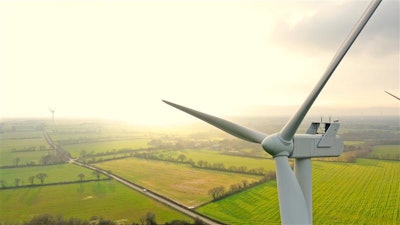
As supply chain leaders turn the page on a tumultuous, pandemic-ridden 2020, it is time to evaluate and understand the energy market dynamics they will be facing.
Energy is a Top 5 operating expense from the factory floor to the distribution center, and as such, must be managed carefully to obtain the greatest value. For those industrial and logistics leaders looking to get the most from their energy dollars in 2021 and beyond, here are five recommendations you can act on immediately that will go straight to your bottom line.
1. Understand the energy market (and your opportunity within it)
This is an “evergreen” recommendation, i.e., one that applies any year and any time. But, at this moment, i.e. Q1 2021, natural gas prices, which are the proxy for electricity prices, are by all measures pretty good. For supply chain executives that can buy power and natural gas right now, odds are in your favor that you will get a good price. But, this favorable pricing may turn on a dime quickly.
In energy circles, 2020 was a year for the history books with unique, once-in-a-generation low energy prices created by years of high production, unseasonably warm winter weather, and with the Coronavirus disease (COVID-19) pandemic, enormous demand destruction. Those low prices were a boon for corporate buyers of energy, helping them save money at a time when they particularly needed it.
But, those lows have already come to an end, and industry watchers are predicting precipitous rises this year.
Now is the time to work with an energy procurement specialist who will monitor the market for you, meet your cost-containment and risk management goals and ready you to transact within it at the most opportune times.
2. Unbundle energy procurement from other energy services
Bundling home and auto insurance policies may sound great on television commercials, but when it comes to energy, bundles are an unmitigated disaster. That’s because the skills required to audit and pay bills at scale are completely different from those required to purchase energy at the best price. And, those differences cost supply chain operations millions of dollars.
Yes, a typical 6-figure annual fee for energy services, including procurement, bill auditing and payment, provides convenience. But, it does not provide energy at the best price. Big name energy services providers don’t want you to know that they aren’t experts at energy procurement and that their processes for procuring energy are embarrassingly scant.
The problem for supply chain executives here is that when it comes to energy management cost, the 80/20 rule applies – with 80% of the total cost of energy lying in the cost of the commodity itself. If your energy services provider isn’t bringing your load to market with the most robust procurement process – one that increases the pool of suppliers bidding for your business and involves an online auction to stoke competitive bidding – you are leaving serious cash on the table.
It is not uncommon for an energy services firm to solicit two or three suppliers, and a bid or two from each, to purchase energy on your behalf. In 2021, that is not even close to being good enough. The best energy procurement specialists run auctions to maximize supplier bidding and competition, averaging over 80 bids per contract. Those bids drive prices down and go straight to your bottom line.
3. Dig into demand
Understanding every line item on your monthly electric bill may be a tall order, but in 2021, you can benefit greatly by focusing on just one – your “demand” line. In most regions, “demand” costs are charged by the grid operator to ensure enough generation is available at peak times, and rates are set by competitive auctions. Your demand charges depend on your “capacity tag,” which is calculated based on how much power you use when the grid is operating at peak demand. On many electricity supply contracts, demand charges are bundled into the fixed price of energy. For large industrials and other big consumers of energy, capacity costs can account for as much as 50% of their energy commodity cost.
That’s a lot of money.
But, because of the pandemic, you may not have used nearly as much peak energy in 2020 as you did in the past, and that matters if you are in an energy contract where your capacity tag was calculated prior to 2020. Put simply, you have two potential opportunities for major energy savings in 2021 around demand charges. First, you may be able to re-negotiate – and reduce – this portion of your electricity bill with your supplier. Second, if you procure energy in 2021, you can leverage your reduced peak usage in 2020 to secure a lower-than-normal demand tag for your future contract.
4. Riding the renewables bandwagon
So much is happening on the renewables front, from technological innovation that is driving down solar and wind power costs to federal, state and local initiatives and incentives to “go green.” There is a lot to say here about how best to green your energy portfolio, but, for now, let’s focus on one area -- buying renewable energy certificates (RECs).
RECs are certificates that each represent the clean attributes of 1 megawatt-hour generated by a renewable energy generator. They are separate from the electrons themselves.
Manufacturing and logistics leaders have been purchasing RECs for years, but may think this approach to greening their supply chains is old hat.
It is anything but.
While some large energy buyers are eager to jumpstart large renewables projects by entering into power purchase agreements to buy the output from newly constructed wind- or solar-farms, some of these projects can take years to get up and running. Wanting to make that commitment is commendable, but don’t forget the REC. RECs can be purchased easily in your next energy procurement as a bridge to deploying your large-scale solar, wind power or other green initiatives.
And, the same strategies for getting the best price for electricity apply to buying RECs. Make sure you are running suppliers through a competitive, online auction process. When suppliers are forced to compete ferociously for your energy and RECs contracts, you win.
5. Get ready now
Procuring energy rewards the prepared. Get ready now, so you can take advantage of soft spots in the market. This will be even more important in 2021 and beyond, as the potential for rising energy prices – spikes in energy cost – outweighs a return to 2020’s record lows.
A skilled energy procurement firm can work with you now to assess your energy use, understand your cost parameters and risk management needs and monitor the market daily for an opportunity to pounce on savings.
Don’t be an “order taker,” someone who goes to market at the last minute and takes whatever it gets because your energy contract is about to run out. Instead, look a year out and engage an expert who can bring the best of the market to you each and every time.



















